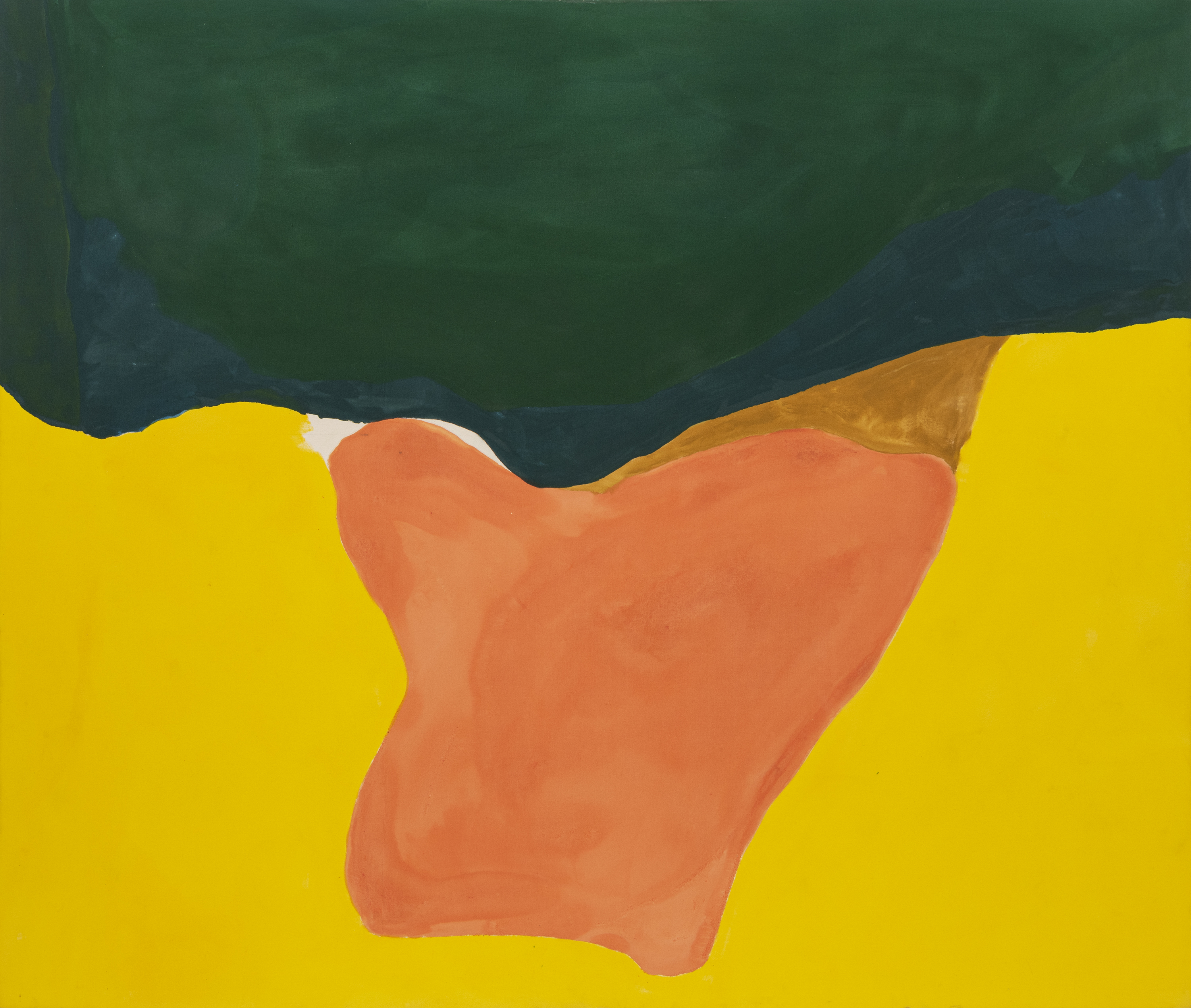Helen Frankenthaler
(New York, New York, 1928 - 2011, Darien, Connecticut)
Wisdom
1969
Acrylic on canvas
94 x 112 in. (238.8 x 284.5 cm)
Collection of the Akron Art Museum
Gift of the Mary S. and Louis S. Myers Family Collection in honor of Mrs. Galen Roush
1978.39
© 2025 Helen Frankenthaler Foundation, Inc. / Artists Rights Society (ARS), New York.
More Information
Helen Frankenthaler is considered the originator of “stain painting,” a technique of applying diluted paint onto raw canvas so the color soaks into and becomes thoroughly integrated with the surface. This imparts an unusual richness of color and reflection of light, creating the effect of watercolor painting on a large surface. Frankenthaler never made preparatory drawings; rather, by applying paint first to the central area and then working outward, she allowed forms to emerge. She worked with her canvas on the floor and manipulated the paint using squeegees and other tools. This groundbreaking method of working had a profound effect on her contemporaries, especially Morris Louis (also on view in this gallery) who adopted a similar technique after visiting her studio.

